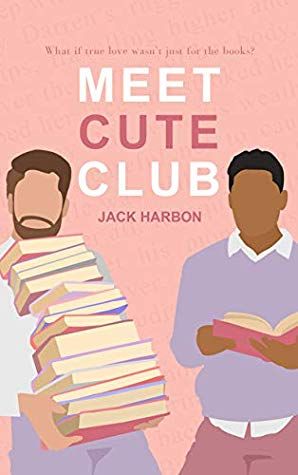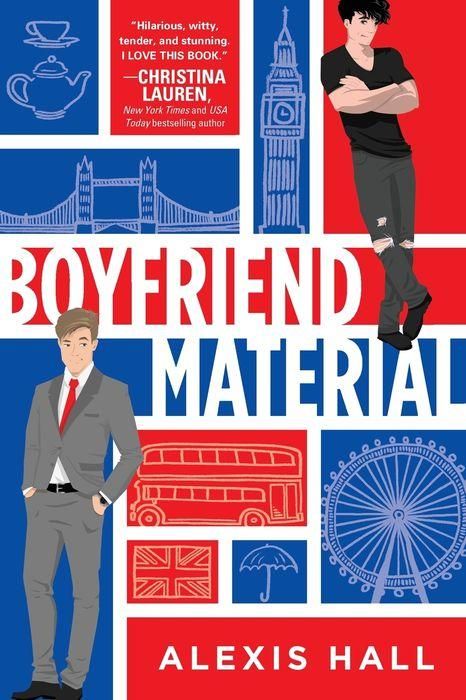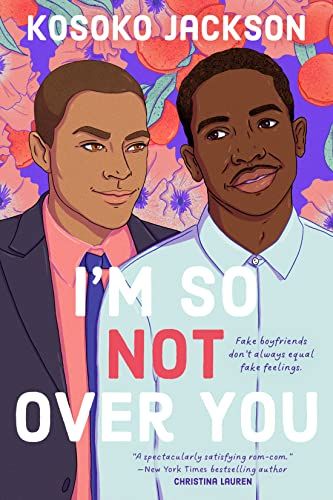Products You May Like
There is an interesting phenomenon in romance: a lot of M/M romances are written by women. This is something I noticed 20 years ago in the fanfic world and it’s just as true in traditionally published romance today, and I suspect in indie romance as well (but I am not particularly well-versed there). But why? Well, I don’t know, but I have some thoughts.
First of all, I want to be clear that I do not actually know that the female authors I am thinking of are all cis. I am going by publicly available information and making assumptions! I have made every effort to be accurate, but it’s possible I’ve made some mistakes, and if that is the case, I am truly sorry (and would appreciate being alerted to my error).
A further note: as of this writing, Amazon’s top sellers in gay romance are almost entirely indie published, and include many author names that appear to be male. This is excellent! Again, I am mostly referring to traditional publishing, because that is the majority of my own reading.
The year that I was 14 (1992–1993), three important things happened. (I’m sure more than three important things happened that year, but the rest are not relevant.) One: The Tale of the Body Thief, the fourth novel in Anne Rice’s Vampire Chronicles, was published. Two: I discovered that I am not heterosexual. And three: I went on a two week camping trip with a youth group, road tripping from upstate New York to the Florida panhandle in a caravan of passenger vans with 30 other teenagers and a boom box…and someone had the audio cassette of Body Thief. It was my introduction to Anne Rice, vampires, and (overtly) queer fiction.
But Annika, you might ask, why are you talking about Anne Rice in an essay about romance novels? Well, first of all, she wrote one. (It’s called Belinda and I do NOT recommend it.) But more importantly, I don’t think I am the only romance reader or writer who grew up reading Anne Rice’s books. Extremely far from it — I think most people currently in our 40s grew up reading Anne Rice, Poppy Z. Brite (Billy Martin), Stephen King, or some combination thereof, and only one of those isn’t gay as hell. (It’s King, if that wasn’t clear. And really, Pennywise is pretty gay.)
Now, Anne Rice was arguably not a cis woman. She told The Daily Beast in 2016 that she had “transcended gender” and considered herself gay, and she spoke of transgender people as “sacred figures.” But I suspect that many cis women who grew up reading The Vampire Chronicles, which are astoundingly gay, went on to write M/M stories, whether fanfic, (romance) novels, or both. Is she the reason for that? Of course I can’t say that, and of course even if she is a reason, or rather inspiration, she couldn’t possibly be the only one. But I do think that for many cis women, our formative experience with gay literature, including the work of Anne Rice, is an important factor. But I digress.
A lot of modern authors came from fan fiction. As a young adult, I came up on Buffy the Vampire Slayer fanfic, and while a good deal of what I personally read was Buffy/Spike, Buffy/Faith, or unlikely friend pairings (Spike/Dawn was a fun one), there was plenty of slash fic, most of it written by young women. Around the same time, Harry Potter fanfic was getting popular, and although I personally never got into it, I knew several people who were into Snarry and Drarry fics (Snape/Harry and Draco/Harry), almost all of them women.
As an aside, I do have time to look at fan art, happily, and recently my favorites have all been based on Our Flag Means Death, where the pairings tend to be M/M.
But I digress…again! Slash fic, especially M/M slash, is very popular in fandom, and a lot of romance authors are actively writing fanfic now or were fanfic writers before they moved into original fiction. A non-queer example is Ali Hazelwood’s The Love Hypothesis being an adaptation of her own Reylo fic. It is also widely believed that queer romance author Casey McQuiston (who is nonbinary) has an AO3 alter ego. The conclusions practically draw themselves. But I begin to wonder if the “problem” isn’t on a recovery course already.
I recently took stock of my own recent romance reading. I love queer love stories, with any and all gender pairings. Just a few of the queer books I’ve enjoyed lately are by Cat Sebastian (M/M, M/F, and F/F), KJ Charles (M/M and M/F), Alyssa Cole (F/F and M/F), Alison Cochrun (M/M), Courtney Milan (F/F), TJ Klune (M/M, written by a man), Alexis Hall (M/M and F/F, written by a man), Susie Dumond (F/F), Akwaeke Emezi (M/F), and Rebekah Weatherspoon (M/F). This is a more diverse selection than I expected to find! (Please note that I included M/F pairings when at least one of the leads is not straight, because those books are still queer.) In a way, it feels like my own reading proves that there is more out there than just M/M romances written by women — which of course is the case.
It seems to me that the problem is not that cis women are writing M/M (although the question of Why? is still out there) but that their M/M books are more likely to be traditionally published than M/M books by men, non-cis, and nonbinary authors. Thanks (no thanks) to publishing bias, we end up with a glut of M/M romance written by cis women. This becomes a problem not necessarily because of the books that exist, but because of the books that we can’t get our eyes on, at least not as easily. (Again, indie books exist! There are so, so many! But they can take more work to find online, and you can’t walk into Barnes & Noble and discover them.)
Every so often, there is a backlash to the (perceived) phenomena, and closeted queer people almost always end up in the crossfire. Many cis women write gay romance to explore their own queerness, whether it be gender- or sexuality-based, and policing who writes any pairings has negative consequences such as outing people or pushing them further into the closet. Two prominent examples of this happening are Becky Albertalli, who felt compelled to come out under questioning for writing YA romance with M/M and F/F pairings, and, outside of romance, Isabel Fall, whose sci-fi short story “I Sexually Identify as an Attack Helicopter” received such vicious criticism that she decided against transitioning to her true self.
And still the Why? hangs over us. There is a theory I’ve come across several times that rings at least somewhat true to me: For heterosexual cis women, it may be easier to imagine attraction to men and boys than to realistically write a character who is attracted to women and girls. For queer cis women, especially those who have not explored their own queerness, and for people who are questioning their own gender but still publicly identifying as cis, writing queer characters can be a lifeline. But surely those aren’t the only reasons cis women write M/M romance — and I don’t know that any one essay can uncover all of them.
This is a long, rambling collection of thoughts. It’s difficult to analyze something like this, and while it is tempting to point fingers and try to find a villain, the women writing M/M romance aren’t the bad guys. As always, the real solution is for traditional publishing to seek out marginalized voices — in this case, including cis men! — and put marketing money behind their books.
M/M Romance Writers Who Are Not Cis Women
Of course, there are plenty of M/M romances by men (and other non-women) being traditionally published already, and even more on the indie side! This is just the tip of the iceberg, but hopefully a good start toward reading MLM written by men and other non–cis woman writers!

Meet Cute Club by Jack Harbon
This book is a crossover success by a nonbinary author. The indie published Meet Cute Club follows Jordan, who runs a romance book club, and Rex, the bookstore employee who has teased him for reading “grandma” books and then asks to join the club. And of course, they fall in love.

Boyfriend Material by Alexis Hall
Hall has an extensive back catalogue with a mix of indie and traditionally published queer titles, including F/F (Rosaline Palmer Takes the Cake) and M/F (A Lady for a Duke). In Boyfriend Material, bad boy Luc needs to repair his public image to keep his job, so he recruits straight-laced Oliver to fake date him. Naturally, fake dating turns into real feelings.

I’m So (Not) Over You by Kosoko Jackson
Writing in both YA and adult, Jackson’s romcom follows Kian, who is not over his ex, Hudson, when he gets a surprising call: Hudson’s parents don’t know they broke up, and he wants Kian to fake still being his boyfriend.
The situation escalates from there, with predictable results!
If your only forays into M/M romance have been titles by cis women, give one of these books a shot!
